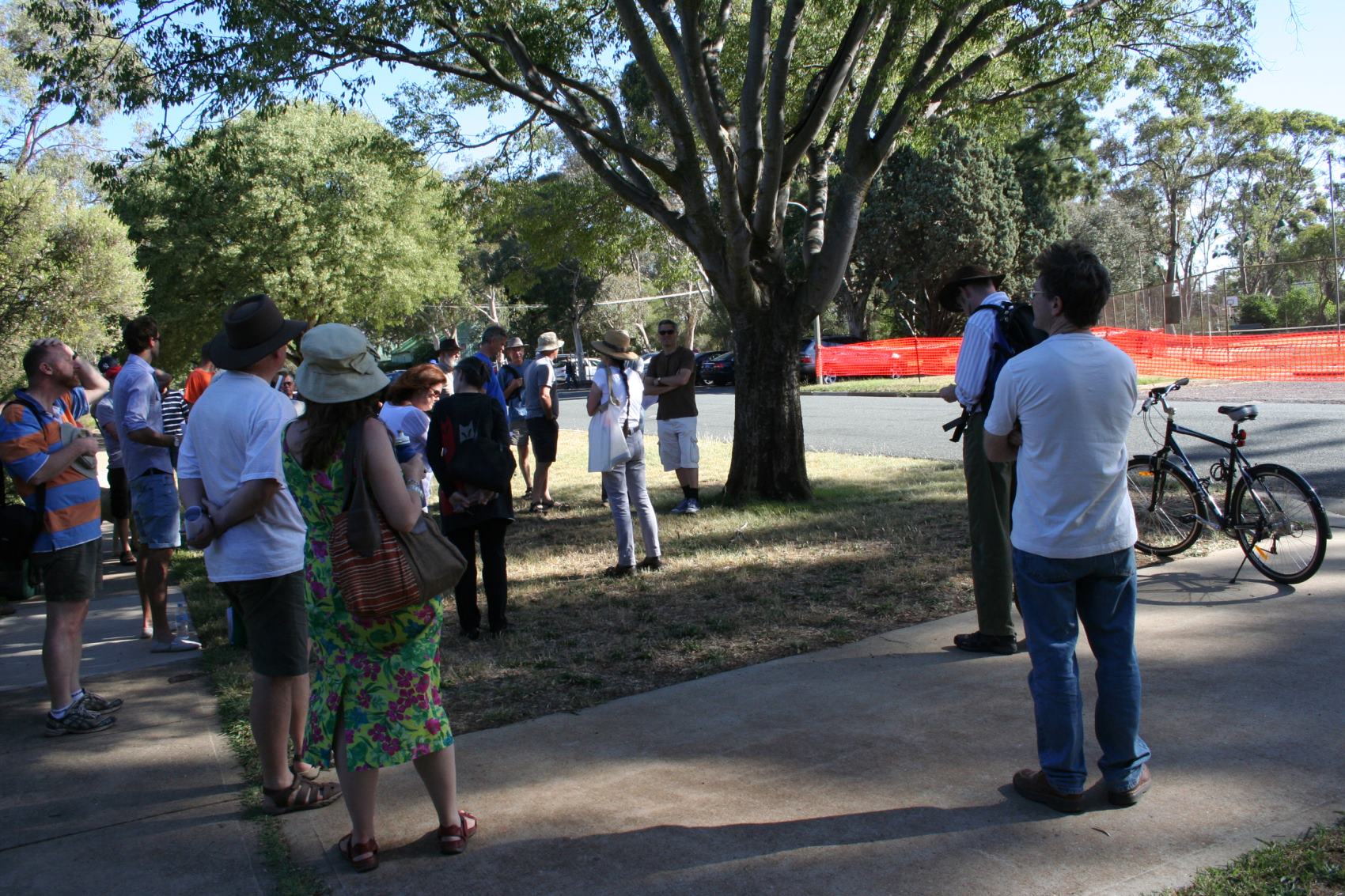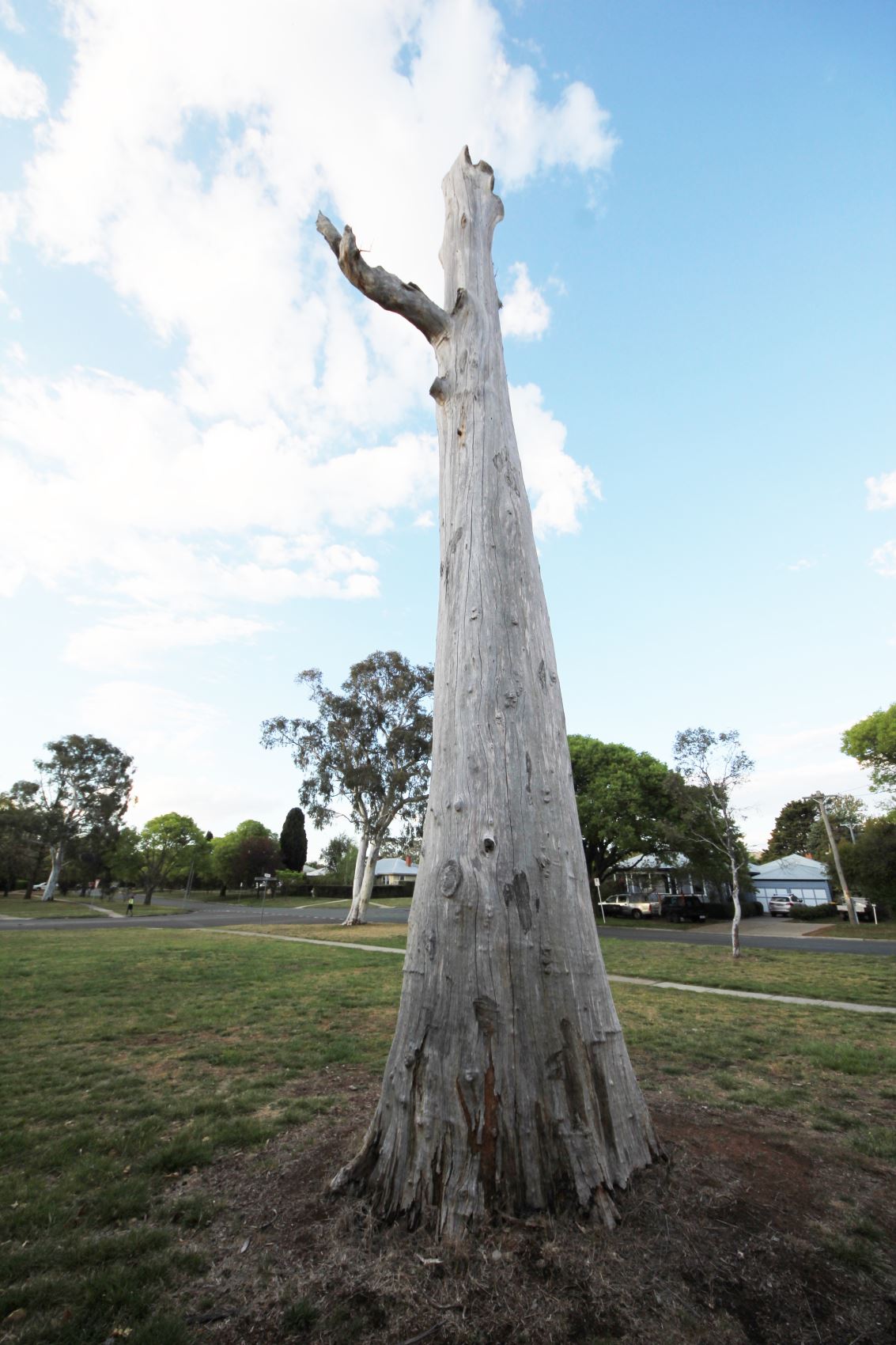A silent sentinel in a city park
A silent sentinel in a city park
How much is an old tree worth? Often we only make the effort to appreciate the value of something when it’s threatened or (worse) after it’s been lost. Take the case of Canberra’s tallest tree, now Canberra’s tallest stump.
There is a large amount of science available that tells us that big, old trees have considerable biodiversity value. But what does that mean when other values (like public safety) are in conflict? This question came into sharp focus for me a few years ago when the Territory Government cut down our city’s tallest urban tree.
The tree was a ribbon gum growing over 40 metres tall in a little park in the suburb of Ainslie, just up the street from where I live.
No-one really talked about this tree, it had always been there. It was so huge that you kind of didn’t notice it – it was simply part of the landscape. And, because no one noticed it, no one asked if it was a good idea that it was growing right next to a community tennis court and club house. Besides being a wonderful looking gum it also housed a large number of birds including a family of gang gangs and a pair of little hawks.

Image: David Salt
One day in 2009, a large branch fell from the tree revealing some rot in the trunk, rot that had probably been there for many years but was so high up it was out of sight. Tree doctors assessed the tree and judged it dangerous. Therefore, according to government rules, it had to be cut down. A public debate erupted as locals attempted to stop the government from removing the tree.

Image: David Salt
I attended one of the public meetings in which both sides of the case (cut it down vs leave it standing) were presented. The tree held considerable biodiversity significance but it also represented a clear and present danger. Cordoning it off meant closing down the community tennis club that lay in its shadow. As it happened, this was Canberra’s oldest tennis club (which may or may not be relevant depending on your perspective). The protests failed and Canberra’s tallest tree is now Canberra’s tallest stump.

Image: David Salt
What stirred me up about this episode was that people were prepared to protest over an issue in their own backyard but only when the threat was clear and obvious. Biodiversity is dying a death of a thousand cuts all around us but these threats normally aren’t in our back yard and are not so obvious so we don’t, as a community, do anything.
The science tells us declining biodiversity is one of the biggest threats facing the sustainability of our planet (see ‘Planetary Boundaries: Exploring the Safe Operating Space for Humanity‘ for a good recent analysis of global sustainability and the connection with biodiversity). But the science seems so impotent to me – it simply doesn’t make a difference. Biodiversity decline only seems to be accelerating everywhere.
Okay, jumping from an old stump to the scale of global biodiversity decline is a leap but for me there’s a real and symbolic connection. What are we doing to replace the values that have been lost with the felling of this individual tree? Considering urban expansion is a major threatening process to biodiversity, what role should urban trees (and the urban space more generally) play in conserving biodiversity? What would motivate the people passionate about a single tree to become more active about the broader debate?
I think it’s sad the tree is gone, though I don’t question that with our current rules and our approach to risk management that it had to go. What’s more, I suspect it had a much longer life than it would otherwise have had because it was out of mind. The ‘tallest-tree’ tag only become public knowledge when local laws said it had to come down. Had it been given this label earlier I suspect it would have come down a lot sooner – tallest trees aren’t supposed to tower over community structures like club houses used by people.
Sometimes anonymity is a trees’ best defence. Consider, for example, Canberra’s oldest tree, which, as it happens, stands about 100m from the stump of Canberra’s tallest tree (that I’ve described above). The oldest tree is said to be the 200-300 year old ‘Corroboree Tree’. But you’ll have to know where to look for it because it’s not labelled or highlighted in any way. Maybe it’s better that way.
David is the Editor of Decision Point, the magazine of the ARC Centre of Excellence for Environmental Decisions.

